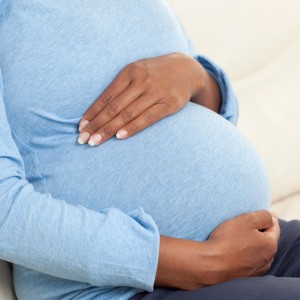By Laura Flynn McCarthy
Adapted by Dr. Gillian Chisholm
The first time I played my acoustic guitar for my son, Michael, he was just a few months old. But even though the only other occasions he could have heard me play was when I was pregnant with him, he turned around and gave me a smile that seemed to say, “I recognize that sound!” Was it possible that he was remembering what he had heard in the womb?
For years, doctors assumed that babies were born without any knowledge about the outside world. But recent research is questioning this assumption, offering clues to what babies comprehend in utero, what they remember after they’re born, and how that information prepares them for the world outside the womb. Today, doctors realize that babies begin to engage many of their senses and to learn about the world around them during the last trimester of pregnancy—and maybe even before.
WHAT’S THAT NOISE?
The uterus isn’t exactly the quietest place to hang out. Not only can a baby hear the sounds of his mom’s body—her stomach growling, her heart beating, the occasional hiccup or burp—but he can also hear noises from beyond. If mom sits in a movie theater with state-of-the-art sound or walks by a noisy construction site, odds are the fetus will react to all the ruckus by kicking or shifting around.
Of course, not all sounds are the same. Perhaps the most significant one a baby hears in utero is his mother’s voice. Around the seventh and eighth month, a fetus’s heart rate slows down slightly whenever his mother is speaking, indicating that mom’s voice has a calming effect.
By the time they’re born, babies can actually recognize their mother’s voice. In one study, doctors gave day-old infants pacifiers that were connected to tape recorders. Depending on the babies’ sucking patterns, the pacifiers either turned on a tape of their mother’s voice or that of an unfamiliar woman’s voice. The amazing result: “Within 10 to 20 minutes, the babies learned to adjust their sucking rate on the pacifier to turn on their own mother’s voice,” says the study’s coauthor William Fifer, Ph.D., an associate professor of psychiatry and pediatrics at Columbia University’s College of Physicians and Surgeons. “This not only points out a newborn’s innate love for his mother’s voice but also a baby’s unique ability to learn quickly.”
Interestingly, there is no evidence that newborns show a similar preference for their father’s or siblings’ voices, or for any other voices they may have heard frequently while in the uterus. “The difference could be that the maternal voice is communicated to the fetus in two ways: as ambient sound through the abdomen and internally through the vibration of vocal chords,” says Janet DiPietro, Ph.D., a developmental psychologist at Johns Hopkins University. “In contrast, external voices and other noises are only heard as ambient sounds.”
In fact, research has shown that if newborns are given a choice, they prefer the version of mom’s voice that sounds closest to what they heard in the womb. “In studies where we gave day-old babies a choice of hearing their mother’s voice filtered to sound as it did in utero—muffled and low—or as it does outside of the womb, they showed a distinct preference for the filtered voice,” says Fifer.
AN EAR FOR LANGUAGE
Muffled or not, unborn babies seem to develop a fine ear for certain sounds. Research reveals that babies had their first lessons in their native language while still in utero. They’ll suck more vigorously to turn on tape recordings of people speaking in the language of their mothers, rather than in a foreign tongue. Of course, it’s likely the babies are picking up on the rhythm and melody of the speech, rather than individual words.
This doesn’t mean that moms need to converse directly to their swelling belly to give their child a head start on language, however. A developing fetus gets all the information he needs just by listening in on his mother’s conversations with others. He also may be picking up something from any books she reads aloud. Besides being able to tell the difference between English and French, a study shows that babies in the womb may be able to recognize the specific rhythms and patterns of the stories they hear. Pregnant women read out loud one of two stories—The Cat in the Hat or The King, the Mice, and the Cheese—twice a day for six weeks before they delivered their babies. After birth, when the infants were three days old, they were played tape recordings of unfamiliar voices reading those stories: They consistently changed their sucking patterns on the pacifiers to hear the story they’d heard in utero.
SEEING THE LIGHT
Since there’s no such thing as a womb with a view, it’s no great loss that a baby’s eyes, which form in the first trimester, are sealed shut until about the seventh month. After they open, the fetus is able to see, but there’s little or no light to see anything by. Some doctors have reported, however, that if you shine a very bright light up inside the uterus, the fetus will turn away from it. Similarly, doctors suspect that the fetus may be able to detect a faint glow if a strong light is pointed right at mom’s belly. Ultrasound has also revealed that fetuses gradually open and close their eyes more and more as they near delivery, as if practicing for blinking and seeing in the outside world.
DISCRIMINATING TASTES
A pregnant woman really is eating for two, and the quality of what she eats matters as much as the quantity. Taste buds develop in a fetus around the seventh or eighth week and, by week 14, there is some evidence to suggest he can taste bitter, sweet, or sour flavors in the amniotic fluid. As with his other senses, he uses taste to explore the womb around him. Ultrasounds have even shown that fetuses lick the placenta and uterine wall.
Studies indicate that the flavors and aromas of the foods mom eats during pregnancy, which pass through to her amniotic fluid, may affect her baby’s taste preferences long after birth. “The more varied a mother’s diet during pregnancy and breastfeeding, the more likely that the infant will accept a new food,” says Julie Mennella, Ph.D., bio-psychologist at the Monell Chemical Senses Center, in Philadelphia. Studies have also found that breastfed babies are more willing than those who were formula-fed to consume a new food when they get older. “This could be because they’ve learned to accept the many different flavors that have passed through the mother’s digestive system to her breast milk,” says Mennella.
A NOSE FOR MOM
An unborn baby not only tastes foods, but can smell them as well. Doctors have noted that, at birth, amniotic fluid sometimes carries the scent of cumin, garlic, fennel, and other spices a mother has eaten while pregnant. Amniotic fluid, which babies swallow and breathe in during their time in utero, not only has the smells of the foods mom eats, but of mom herself.
That, in fact, may be how newborns recognize their mothers. “It’s possible that in the first few hours after birth, a baby’s sense of smell may be more important in helping him identify his mother than his vision is,” says Mennella. In fact, studies have shown that if a mother washes just one breast right after birth, the baby will prefer to nurse at the other, unwashed breast. (This is why some doctors advise new mothers not to shower until at least after the first feeding—to allow their natural aroma to help establish breastfeeding.)
PERCHANCE, TO DREAM?
Through ultrasound tests, researchers have seen evidence that babies in utero experience rapid eye movement (REM) sleep, which is associated with dreaming, at around 32 to 36 weeks. No one knows whether they’re actually dreaming, since their brain waves can’t yet be monitored, but doctors believe that it’s certainly possible.
In fact, the sleep patterns of fetuses in this stage of development closely resemble those of newborns: They spend a lot of their time in REM sleep, but also in a quiet, deep sleep where there is no eye movement. Researchers have also observed babies in utero in a state of quiet alertness, which suggests they may be concentrating on something—listening to mom talking, perhaps.
READY FOR THE BIG WORLD
Babies eagerly investigate whatever they can get their hands on—and the fun starts before birth. As early as 20 weeks, fetuses react to what’s around them. (Ultrasounds have shown that some try to grasp the amniocentesis needle when it’s inserted into the uterus.) But it isn’t until the third trimester that they really begin to grow curious about their intrauterine world. Though there isn’t a whole lot in there to play with, fetuses entertain themselves by sucking on their hands and fingers (especially their thumb, which they discover at about 18 weeks). They also ‘walk’ around by pushing on the uterine walls with their feet, and yank, pull, and swing their umbilical cord—they even practice breathing.
All this playing around helps them develop important reflexes they’ll need once they’re born. Sucking will not only be crucial to taking in food but will also be a source of comfort. And feeling things with their mouth is an important way for babies to explore things. Filling their lungs and moving the diaphragm up and down—albeit with fluid instead of oxygen—is also good practice; by the time the baby makes his entrance into the world, he will have learned to breathe on his own.
Doctors believe that pushing off the uterine wall probably helps the fetus develop the ability to reach his mother’s breast soon after birth. When a newborn baby is placed on his mother’s bare abdomen, his primal instinct starts to kick in: Within the first hour of life, he’ll push his way up toward his mother’s breast, guided mostly by scent, according to research by Marshall Klaus, M.D., author of Your Amazing Newborn.
So compelling is the research on this early dance between mother and baby that Dr. Klaus and other neonatal researchers are now urging hospitals to change their procedure for handling newborns: Instead of weighing and bathing the infant right after delivery, they suggest placing him between the mother’s breasts immediately after an initial examination and waiting at least an hour after birth to perform any necessary procedures.
All this goes to show that a baby isn’t just passively waiting to be born while in the womb. He’s already building important skills and developing a strong bond with one of the most important people in his life—his mother.
Laura Flynn McCarthy is a New Hampshire-based freelance writer who specializes in health and parenting issues. She is also the mother of two boys.



